Panna Felsen
Predicting 3D Human Dynamics from Video
Aug 20, 2019
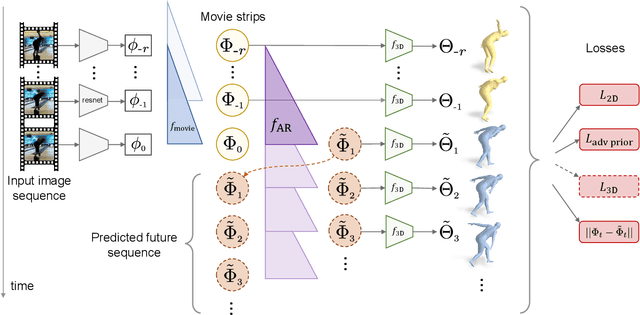


Abstract:Given a video of a person in action, we can easily guess the 3D future motion of the person. In this work, we present perhaps the first approach for predicting a future 3D mesh model sequence of a person from past video input. We do this for periodic motions such as walking and also actions like bowling and squatting seen in sports or workout videos. While there has been a surge of future prediction problems in computer vision, most approaches predict 3D future from 3D past or 2D future from 2D past inputs. In this work, we focus on the problem of predicting 3D future motion from past image sequences, which has a plethora of practical applications in autonomous systems that must operate safely around people from visual inputs. Inspired by the success of autoregressive models in language modeling tasks, we learn an intermediate latent space on which we predict the future. This effectively facilitates autoregressive predictions when the input differs from the output domain. Our approach can be trained on video sequences obtained in-the-wild without 3D ground truth labels. The project website with videos can be found at https://jasonyzhang.com/phd.
Learning 3D Human Dynamics from Video
Dec 04, 2018
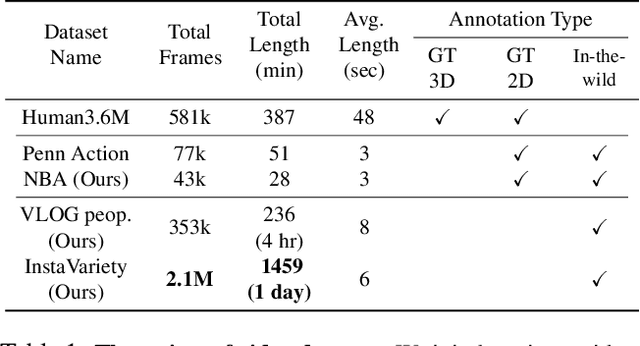


Abstract:From an image of a person in action, we can easily guess the 3D motion of the person in the immediate past and future. This is because we have a mental model of 3D human dynamics that we have acquired from observing visual sequences of humans in motion. We present a framework that can similarly learn a representation of 3D dynamics of humans from video via a simple but effective temporal encoding of image features. At test time, from video, the learned temporal representation can recover smooth 3D mesh predictions. From a single image, our model can recover the current 3D mesh as well as its 3D past and future motion. Our approach is designed so it can learn from videos with 2D pose annotations in a semi-supervised manner. However, annotated data is always limited. On the other hand, there are millions of videos uploaded daily on the Internet. In this work, we harvest this Internet-scale source of unlabeled data by training our model on them with pseudo-ground truth 2D pose obtained from an off-the-shelf 2D pose detector. Our experiments show that adding more videos with pseudo-ground truth 2D pose monotonically improves 3D prediction performance. We evaluate our model on the recent challenging dataset of 3D Poses in the Wild and obtain state-of-the-art performance on the 3D prediction task without any fine-tuning. The project website with video can be found at https://akanazawa.github.io/human_dynamics/.
Recurrent Network Models for Human Dynamics
Sep 29, 2015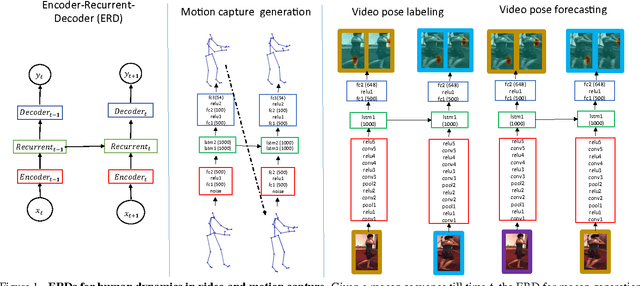
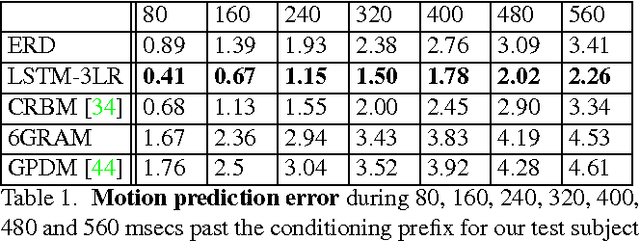
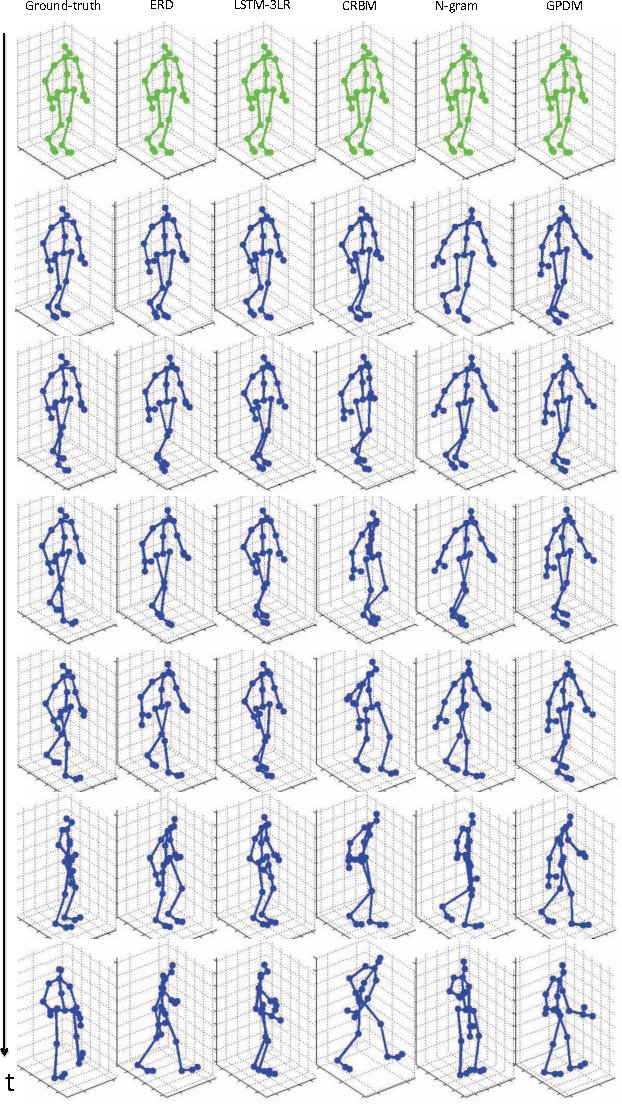
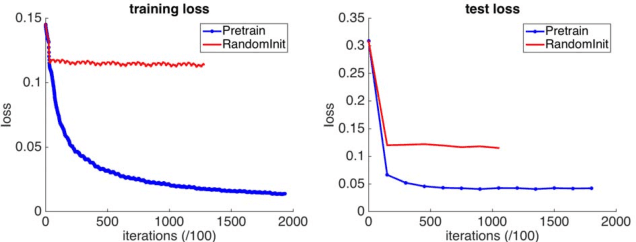
Abstract:We propose the Encoder-Recurrent-Decoder (ERD) model for recognition and prediction of human body pose in videos and motion capture. The ERD model is a recurrent neural network that incorporates nonlinear encoder and decoder networks before and after recurrent layers. We test instantiations of ERD architectures in the tasks of motion capture (mocap) generation, body pose labeling and body pose forecasting in videos. Our model handles mocap training data across multiple subjects and activity domains, and synthesizes novel motions while avoid drifting for long periods of time. For human pose labeling, ERD outperforms a per frame body part detector by resolving left-right body part confusions. For video pose forecasting, ERD predicts body joint displacements across a temporal horizon of 400ms and outperforms a first order motion model based on optical flow. ERDs extend previous Long Short Term Memory (LSTM) models in the literature to jointly learn representations and their dynamics. Our experiments show such representation learning is crucial for both labeling and prediction in space-time. We find this is a distinguishing feature between the spatio-temporal visual domain in comparison to 1D text, speech or handwriting, where straightforward hard coded representations have shown excellent results when directly combined with recurrent units.
Learning to Segment Moving Objects in Videos
May 08, 2015



Abstract:We segment moving objects in videos by ranking spatio-temporal segment proposals according to "moving objectness": how likely they are to contain a moving object. In each video frame, we compute segment proposals using multiple figure-ground segmentations on per frame motion boundaries. We rank them with a Moving Objectness Detector trained on image and motion fields to detect moving objects and discard over/under segmentations or background parts of the scene. We extend the top ranked segments into spatio-temporal tubes using random walkers on motion affinities of dense point trajectories. Our final tube ranking consistently outperforms previous segmentation methods in the two largest video segmentation benchmarks currently available, for any number of proposals. Further, our per frame moving object proposals increase the detection rate up to 7\% over previous state-of-the-art static proposal methods.
 Add to Chrome
Add to Chrome Add to Firefox
Add to Firefox Add to Edge
Add to Edge